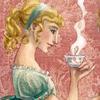 Thanks Emily for taking the time to answer my
questions and agreeing to talk Jane Austen with me. This is my first
curiosity: when and how did you come to
write a Jane Austen sequel?
Thanks Emily for taking the time to answer my
questions and agreeing to talk Jane Austen with me. This is my first
curiosity: when and how did you come to
write a Jane Austen sequel?
Mr Darcy’s Guide to Courtship is more of a prequel: it is set shortly before the events of Pride and Prejudice, and imagines the advice that Darcy might have given Bingley on how to attract a suitable lady before he is let loose on Hertfordshire’s female population.
As an historian, my recent research has focused on the real seduction manuals – often just collections of what we’d now call ‘chat up lines’ – that were in circulation in and around Jane Austen’s lifetime. Many of them are really entertaining, and I wanted to bring them back into public view somehow. Austen’s books have been a part of my life for as long as I can remember, and it only seemed right to reveal how men really went about winning a lady’s affections through the medium of Regency England’s most eligible bachelor himself!
If I say ... Mr Darcy, what is the first image that comes to your mind?
I can’t lie – luxuriant sideburns and very, very tight breeches. I am very much a child of the 1995 BBC television series.
Why did you choose Pride and Prejudice and Mr Darcy’s point of view on the Regency Era?
The Darcy I have tried to revive here is the man who so infuriates Elizabeth – he is deliciously rude, haughty, and no-nonsense (and, in fact, should probably keep out of people’s love lives).
While most of the advice in the book is based on real historical examples, it was great fun to add Darcy’s own voice and explore the mindset of a man who has set women swooning for the last two hundred years – despite the fact that he is a completely intolerable git at the beginning.
Could he really survive in our contemporary world? How would he cope with modern women?
The fact that he ultimately falls for Lizzie – a spirited, witty and independent woman – suggests that he might not be so horrified by the women he would meet with in the modern world. Providing they were all hugely accomplished, of course.
Is there any other Austen hero/heroine you would like to write a handbook for?
The book does feature contributions from other Austen characters, including beauty tips from Caroline Bingley, the benefits of living life without men from Emma Woodhouse and chat up lines suggested by George Wickham.
I’d say my favorite Austen heroine is Catherine Morland, although I’m not sure she would ever feel qualified to impose her advice on anyone! But I certainly think the world would be a more enlightened (and slightly more nauseated) place with a ‘Guide to the Pleasures of the Married State’ from Mr Collins.
As a historian, what is the most fascinating/peculiar aspect of Jane Austen’s time you’ve researched about?
We tend to have a very romantic, idealised view of the Regency era – not least because modern adaptations of Austen’s novels tend to favour the ‘classic love story’ approach rather than highlighting how bitingly funny her social commentary can be.
I think it’s important to get beyond this rather flat view of history, and most of my research looks at the Georgian ‘underworld’ – which was much more visible than people think! When planning a solo trip to London aged 21, Austen joked to her sister that without supervision she would no doubt be made drunk and tricked into a life of prostitution by a local brothel-keeper.
She even hints at it in her novels – Lydia Bennet’s ‘loss of virtue’ (as her sister Mary puts it) was not just a disgrace for the family, but also put her in very real danger. It’s not a wild stretch of the imagination to suppose that, without Darcy’s intervention, she could have been abandoned by Wickham and forced to make a living on the streets of London. She came perilously close.
How would you advertise your book, Mr Darcy’s Guide to Courtship, in less than 50 words?
In Mr Darcy’s Guide, Fitzwilliam himself reveals the secrets behind his attractiveness, and how you can set about securing the perfect spouse. If you’re interested in genuine eighteenth-century advice on finding love – or if you just can’t get enough of Mr Darcy! – this book is for you!
That’s all for our Austen chat, Emily. Thank you so much for being my lovely guest today. Have you got any questions to ask our readers?
Thank you! My question is: Why do you think we are all still swooning over Darcy after two hundred years?
 The book
The book
Mr Darcy’s Guide to Courtship offers advice from a Fitzwilliam Darcy as yet unmellowed by contact with Miss Elizabeth Bennet, In it, Jane Austen’s most fancied hero reveals the secrets of his success with the opposite sex and gives hints to both ladies and gentlemen on the rules of courtship, including: making oneself agreeable, identifying if a lady is a harlot and the incalculable benefit of a tight pair of breeches The book is available to buy in the UK and in the US at http://www.shirebooks.co.uk/store/Mr-Darcy’s-Guide-to-Courtship_9781908402592

The author
Emily Brand is a writer and historian with a special interest in eighteenth-century England. She also has a regular column in Jane Austen’s Regency World, exploring the misdemeanours of Regency rogues. You can follow her on twitter as @EJBrand.

